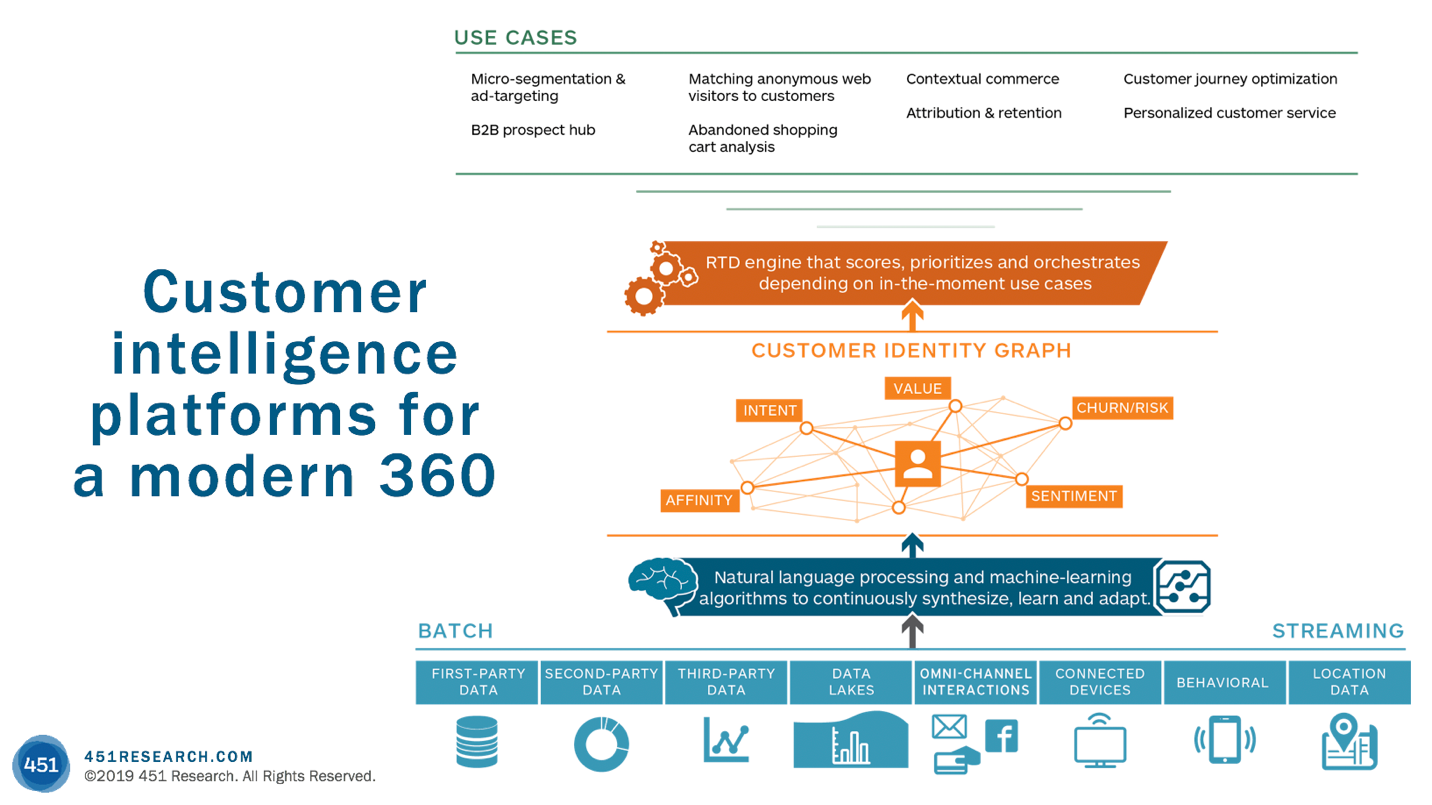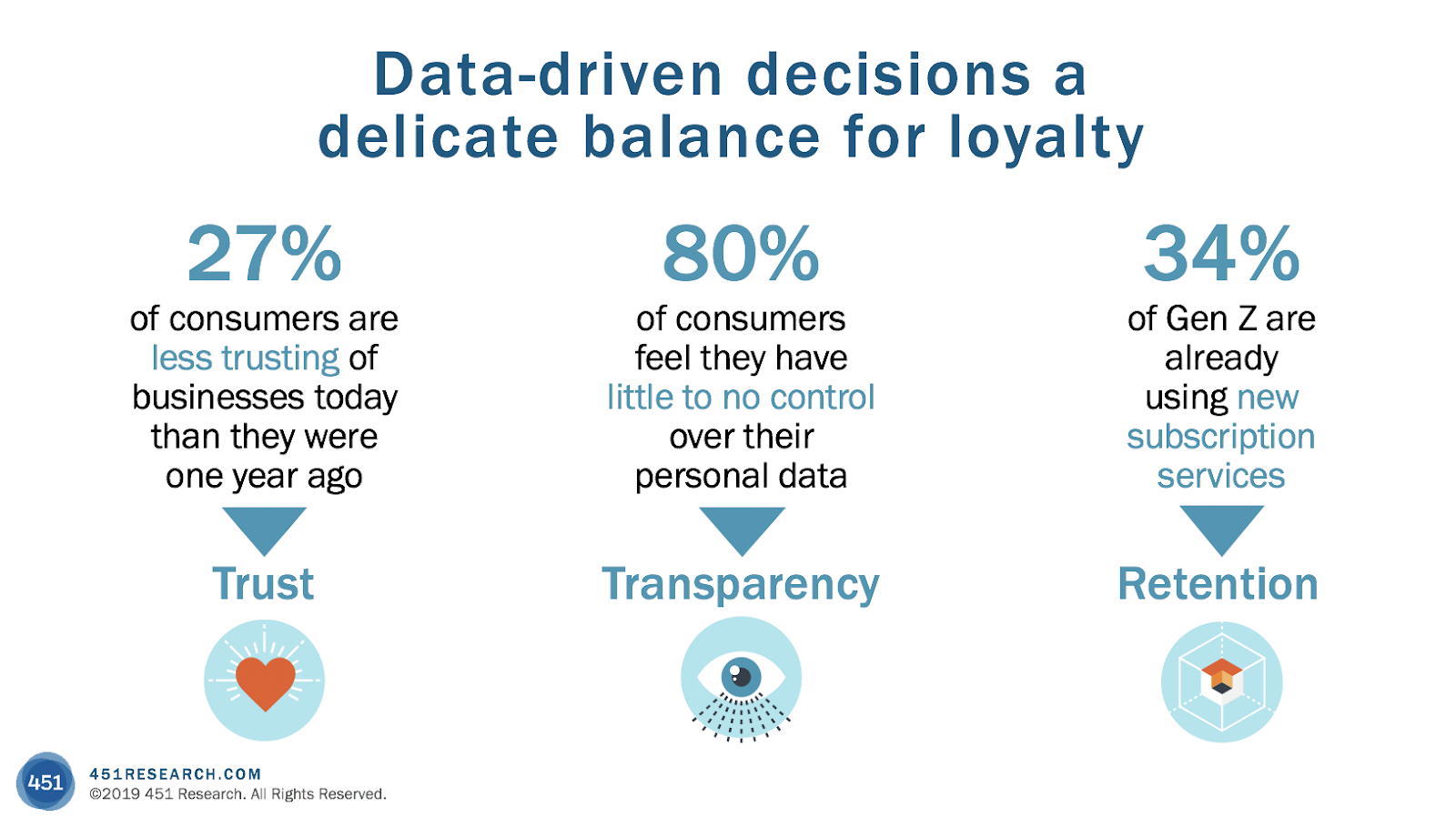The pressure to deliver differentiated and consistent customer experiences is increasing as a result of significant disruption across industries. Simultaneously, a seismic shift in growth strategies is taking place, with many businesses and consumers looking to subscribe to services rather than buy products outright. The subscription model changes short-term economics and long-term relationships with customers, necessitating new business and engagement models. The result will be a stronger focus on loyalty and relationships that build on consistent, positive interactions with customers.
For businesses to effectively compete in this new environment, they need to capture, analyze, understand, and act on information. They also need to recognize patterns, comprehend ideas, plan, predict, solve problems, identify actions, and make decisions. The explosion in connectivity, intelligent devices, and the digital interfaces overlaying this information now make it increasingly possible to convert it into personalized experiences, augmented by real-time context and customer preferences.
The most meaningful (and ultimately profitable, for those that provide them) experiences will be informed by data-driven context clues, which will only increase in number as the amount of available data, especially unstructured data, proliferates. This will continue to accelerate with the growth of new types of connected devices capturing unprecedented volumes of behavorial data.
Having a 360-degree view of the customer is at the heart of the business use case for many related technologies—everything from applying machine learning to detect buying intent to creating personalized emails and web landing pages, or deciding which contact channels to support. During the past two years, 451 Research has been advocating the adoption of customer intelligence platforms (CIP) and also wrote about it here on SmartCustomerService.com.
Figure 1
Source: 451 Research

For decades, businesses have sought a comprehensive picture of customer activity and behavior, but have been thwarted by data that remains siloed or unanalyzed. Finally, processes for getting a reliable and complete view of what customers want (and how they want to be contacted) are taking shape. Tools that synthesize different data sources across enterprises are starting to provide insights into moments of influence and leverage, enabling faster, more personalized interactions with customers.
Figures 1 and 2 show that CIPs do more than consolidate a single view of the customer: they add a layer of data governance, synthesis, and identity, which powers a dynamic customer graph to fulfill the vision of contextual experiences. It goes a step further than customer data platforms (CDP) by applying contextual AI for synthesizing data that dynamically links customer-customer and data-customers using an optimized mixture of matching techniques to turn raw data into relationship discovery, with graphs, columnar data stores, and in-memory high-performance indexes.
A CIP is critical for businesses that demand a transparent data science architecture and platform that empowers line of business and IT collaboration. It is not just SaaS, but also can operate along-side enterprise public or private cloud requirements. It allows for use of the data for not just marketing, but also sales, service, and commerce across the customer journey in a headless environment.
Figure 2
Source: 451 Research

As it ingests and synthesizes more data into the customer 360, a CIP platform must also become more intelligent in identifying important trends and information for each customer and better at summarizing the important intelligence across the customer journey.
Automated reasoning helps make inferences and enrichments on each customer profile and helps line-of-business users predict the customer’s future actions, such as churn, propensity to buy, proximity, and location, etc. It provides a deeper understanding of individual customer journeys and unique interactions, combined with transactions, to accurately understand and improve customer experience.
We predicted that the landscape would grow complicated as CRM, DMP, CDP, and MDM vendors build out their data platform capabilities to provide more CIP-like capabilities. Salesforce.com, Oracle, SAP, and Adobe over the past year all announced their future vision. MDM provider Informatica acquired AllSight. CDP vendors like NGdata, Evergage, RichRelevance, and IgnitionOne broadened their data science platform capabilities to go beyond CDP toward use cases across the customer journey. Syntasa sits natively within a private cloud and extends existing Hadoop initiatives, with advanced capabilities beyond marketing toward data scientists with its AI data synthesis and data orchestration capabilities. Segment and mParticle receive strong funding based on rich data connection and platform capabilities.
Executing on business transformation demands new investments in new digital platforms. This requires a well-planned approach to business and IT innovation, with the goal of aligning around a disruptive culture that drives investments in new tactics to remain relevant in the eyes of customers. Addressing customer demand for new immersive experiences relies heavily on rich media content, prescriptive insight, and intelligent automation to build deeper connections, recommend next-best actions, and create more contextually driven interactions. Investing in CIPs for a modern 360 with algorithmic technologies can help to achieve scalable contextual relevance as intelligent applications take over execution, freeing up resources across the business.
However, it is not without caution. As effective use of customer data becomes more integral to success, businesses must be cognizant that hyper-personalization strategies are already in jeopardy of breaking consumer trust. The current dilemma is a cautionary tale of the importance of transparency, especially in the context of the European Union's General Data Protection Regulation. Figure 3, our "Voice of the Connected User Landscape" (VoCUL) monthly tracking of consumer trust and confidence, shows that 27 percent of consumers are less trusting of U.S. businesses than they were a year ago. When it comes to data privacy, consumers don't trust companies to adequately protect their personal data or provide transparency for how it is used.
Figure 3
Source: 451 Research

Business is being redefined from a transactional relationship between people into a more nuanced, tangled relationship between humans and the automated systems and devices they use to engage the world. Heightened demands for context, convenience, and control in all customer interactions require companies to re-evaluate how they provide contextually relevant experiences for their customers.
The empowered customer is, in effect, forcing evolution of the entire technology stack to enable real-time, contextually relevant experiences. We have witnessed dramatic changes as a result, with the relationship between IT and line of business evolving to embrace and capitalize on this disruption. Whether through contextual experiences, pervasive intelligence, or emerging cloud models, it is clear that technology plays a pivotal role in determining long-term trends and driving changes in human behavior.
As the pace of technology, innovation, and competitive pressures accelerate, business leaders who ignore this new reality do so at their own peril. Experiences, not products, will be the battleground of the future, and data plays a powerful role in improving the context of those experiences. Organizations must digitally transform their businesses to best attract, win, retain, and support customers by leveraging the latest applications, analytics, and infrastructure to deliver differentiated experiences. Doing so is not a luxury, but a necessity for survival.
Sheryl Kingstone is research director for business applications at 451 Research.